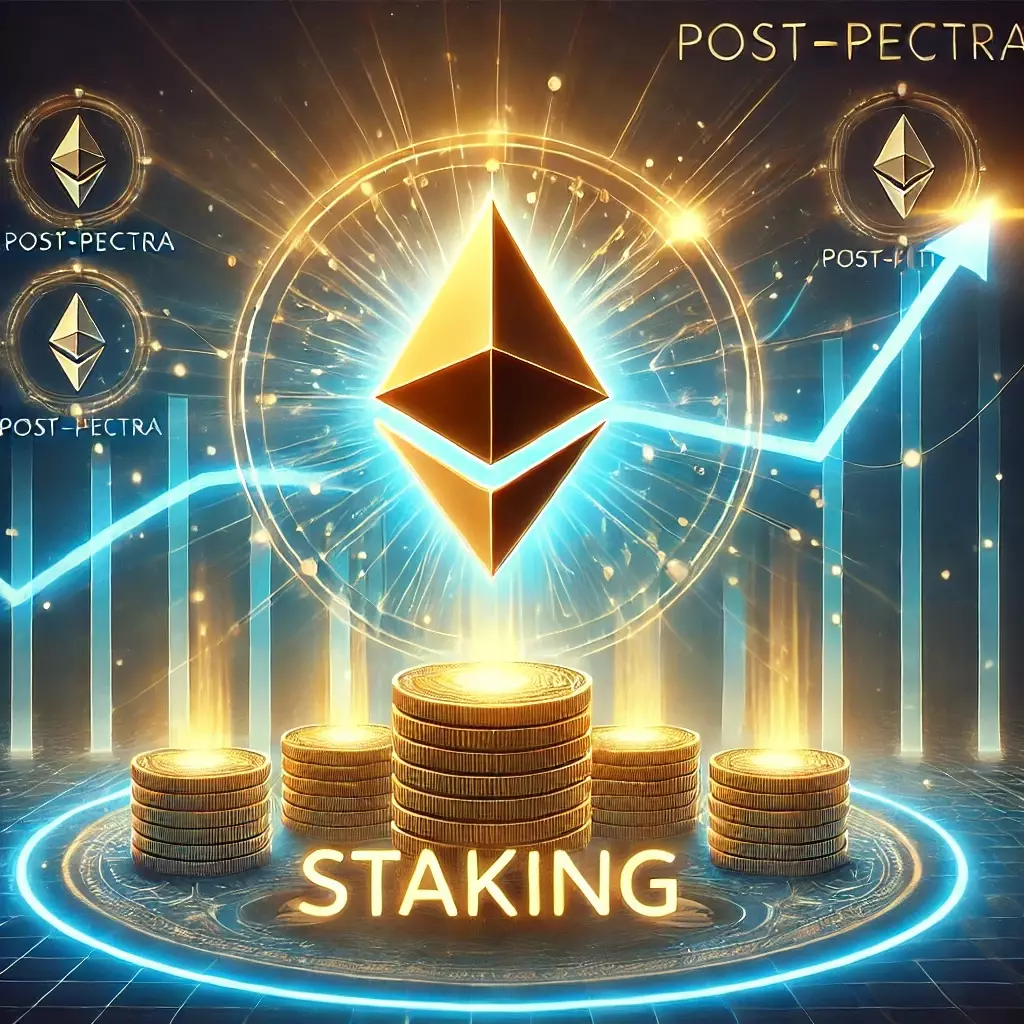In the ever-evolving landscape of cryptocurrency, few assets embody contradictions as poignantly as Ethereum. At a crucial junction, Ethereum’s price has incrementally climbed up to $1,820—a welcome retreat from the depths of uncertainty, representing a 3.3% surge in weekly price and a modest 2.5% increase over the past day. Yet despite these fleeting positives, the broader context paints a more complex picture. This juxtaposition of rising staking activity against alarming plunges in fee revenue indicates more than a mere momentary improvement; it reveals deep-seated anxieties that lurk beneath the surface.
The latest figures suggest that participants are rediscovering their confidence in staking, with Ethereum holders seemingly rushing back to secure their investments post-Pectra upgrade. However, this must be tempered with the reality that the total staked supply had plummeted by over one million ETH just months prior—a sign of waning enthusiasm rather than genuine conviction. Kripto Mevsimi’s insights illustrate a rather timid re-engagement with Ethereum’s staking framework, reflecting not a solid foundation but rather a hesitant boldness as investors rode the tide of temporary optimism.
Regulatory Oversight and Market Dynamics
At the heart of this complex environment lie regulatory uncertainties, which loom over the cryptocurrency market like a specter, curbing genuine enthusiasm for long-term investment. Though industry experts speculate that the Pectra upgrade may prompt institutional adoption or catalyze exchange-traded fund (ETF) opportunities, the scant clarity on regulations continues to serve as a deterrent.
In this precarious climate, one cannot ignore the dichotomy between rising staking enthusiasm and dwindling fee generation. The staggering 94.82% plunge in Ethereum’s network fee revenue—plummeting from 5,646 ETH down to a mere 292 ETH—invites serious scrutiny. Validators, who earn their livelihoods through fees generated by transactions, are seeing their income shrink at an alarming rate. Simultaneously, growing interest in Layer 2 solutions like Arbitrum and Optimism complicates this narrative yet further; as users migrate towards these platforms for cheaper fees, Ethereum’s core functionality is increasingly questioned.
The Echoes of Institutional Hesitance
As the cryptocurrency infrastructure undergoes a seismic realignment, Ethereum’s viability as a leading asset is being deliberated by more than just retail investors. The questions surrounding feasibility and utility are being bandied about in institutional circles. The return of staked ETH signals a potential shift in sentiment among these deep-pocket investors, yet their caution is understandable. They are likely weighing the perceived strengths of Ethereum against burgeoning alternatives, all while grappling with the patchy regulatory outlook.
Consequently, the trending increase in staking activity can be seen as eyed with skepticism rather than exuberance. Is this a strategic repositioning in anticipation of a bullish future, or merely a flight of fancy, fueled by temporary respite from broader disquiet? Without greater certainty surrounding the regulatory framework and user engagement metrics, institutions may remain on the sidelines, further obscuring Ethereum’s path forward.
The Illusion of Confidence
Despite the uplift in staking, the general sentiment does not dwindle down to simplistic optimism. The dichotomy of decreasing fees amidst rising staking volumes might reveal a façade of stability, effectively masking deeper problems inherent to the network. While the Ethereum ecosystem tightens its grip around the “HODL” mentality, the realities of market participation are more nuanced. Investors are being lured into a false sense of security, propelled by fleeting gains that do not address foundational concerns.
What emerges is a portrait of a market struggling with its own identity. Ethereum’s implications for the evolving landscape of decentralized finance and smart contracts continue to draw interest; however, without substantial resilience in transaction dynamics and fee generation, this recovery feels alarmingly hollow. Investors must take heed of their well-founded anxieties, challenging the narrative of skyrocketing returns and instead searching for solidity in Ethereum’s long-term roadmap.
In this volatile tapestry, the nods of optimism may ultimately be destiny’s tricks—potent enough to distract, yet fragile enough to mislead. Ethereum stands at a crossroads, and the journey ahead is laden with questions that cannot likely be skirted by short-term gains alone.

